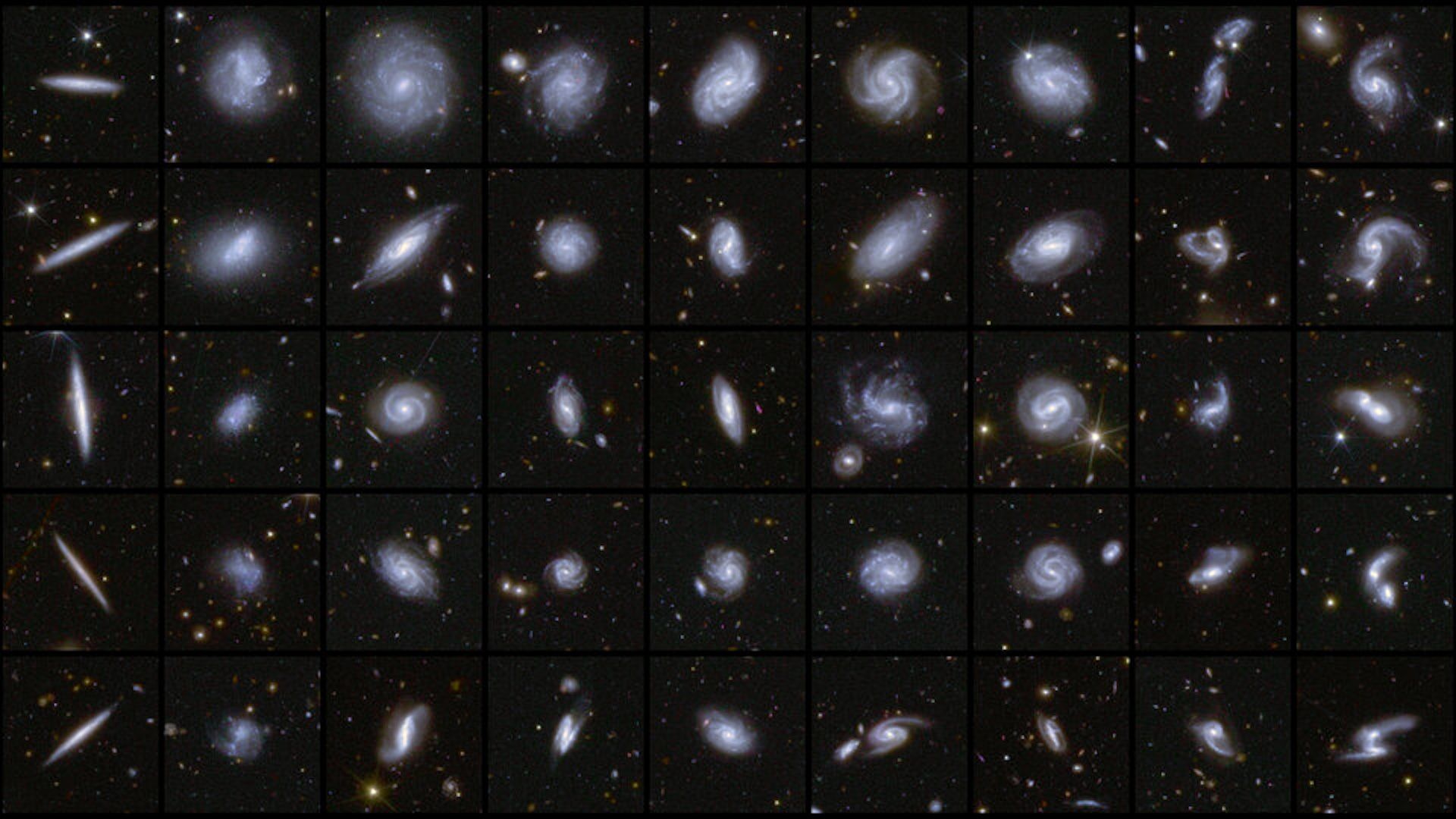Follow us on Google News (click on ☆)

Some of the many galaxies of various shapes captured by Euclid during its first observations of deep field regions.
Credit: ESA/Euclid/Euclid Consortium/NASA, image processing by M. Walmsley, M. Huertas-Company, J.-C. Cuillandre
Launched in July 2023, Euclid began collecting data in February 2024. Its primary mission is to map the large-scale structure of the Universe. This will allow scientists to better understand dark matter and dark energy, two still mysterious components that represent about 95% of the Universe.
On March 19, an initial series of data was released, including scans of three regions of the sky that Euclid will regularly observe. This data contains detailed classifications of more than 380,000 galaxies, a tiny sample compared to the 1.5 billion galaxies the telescope hopes to catalog during its six-year mission.
The initial images reveal 26 million galaxies, with the most distant ones located 10.5 billion light-years away. These observations offer a unique glimpse into the large-scale organization of galaxies, which is crucial for understanding their formation and evolution.
To process the enormous amount of data generated by Euclid, scientists are turning to artificial intelligence. An algorithm, trained with the help of nearly 10,000 volunteers from the Galaxy Zoo project, is used to identify galaxy features, such as their spiral arms.

This zoomed-in image of Euclid's Deep Field South contains a tiny fraction of the galaxies the telescope will image during its six-year mission.
Credit: ESA/Euclid/Euclid Consortium/NASA, image processing by J.-C. Cuillandre, E. Bertin, G. Anselmi
The Euclid mission promises to profoundly alter our understanding of the Universe. By mapping the distribution of galaxies, it could finally lift the veil on the mysteries of dark matter and dark energy, opening new perspectives in cosmology.
What is dark matter?
Dark matter is a form of matter that does not emit, absorb, or reflect light, making it invisible and detectable only through its gravitational effects on visible objects. It constitutes about 27% of the Universe.
Scientists believe that dark matter plays a crucial role in the formation and structure of galaxies. Without it, galaxies could not maintain their cohesion under the effect of their own gravity.
Despite its abundance, the exact nature of dark matter remains one of the greatest mysteries of modern physics. Theories range from weakly interacting massive particles (WIMPs) to modifications of the laws of gravity.
Current research, such as that conducted by the Euclid telescope, aims to map the distribution of dark matter in the Universe to better understand its properties and role in cosmic evolution.
How does Euclid study dark energy?
Dark energy is an unknown force that accelerates the expansion of the Universe. Representing about 68% of the total energy of the Universe, it is still not understood by scientists.
Euclid studies dark energy by observing the distribution and motion of galaxies over vast distances. By measuring how these structures evolve over time, researchers can infer the effects of dark energy.
The telescope uses two main methods: measuring the distortions of galaxy light due to dark matter (gravitational lensing effect) and analyzing galaxy clusters to understand their spatial distribution.
These observations will allow testing of current theories about dark energy, such as Einstein's cosmological constant, and could lead to new discoveries about the fundamental nature of the Universe.